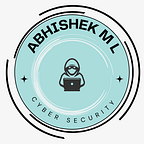The Cybersecurity Journey: A Roadmap for Beginners and Enthusiasts
Are you ready to dive into the exciting, ever-evolving world of cybersecurity? Whether you’re a curious beginner or an eager enthusiast looking to level up your skills, you’ve come to the right place! 🌐💻
Before we dive in
WHAT IS SPECIAL ABOUT THIS BLOG???
- Every resource mentioned in this blog is completely free of charge. It’s your one-stop destination to explore the cybersecurity roadmap and discover free resources for learning!
I hope I can assist you in kickstarting your journey in “Cyber Security”. Happy reading !!
“MINDSET”
The journey into cybersecurity doesn’t just require technical skills — it demands a mindset of constant learning. Think about it: Have you ever found yourself wondering what happens behind the scenes when you type a URL like https://google.com and press ‘Go’? How does your browser connect to a server, retrieve the web page, and ensure it’s secure?
If you’re someone who’s always asking questions, digging deeper, and eager to learn how things work, then you’re already on the right path. In cybersecurity, the more you explore, the more you discover, and the more you grow.
Now are you ready to start setting yourself up for success?😎
The “first step” is mastering the “IT FUNDAMENTALS”
- Networking: Understand the basics of how devices connect and communicate, including concepts like IP address, subnets, and protocols.
Resource : Learn-Networking-Fundamentals
- Operating Systems (OS): Familiarize yourself with different operating systems, such as Windows and Linux. Learn how they function.
Resource : Windows-Fundamentals, Linux-Fundamentals
- Basic Programming: Develop foundational programming skills in languages like Python or JavaScript, which will help you understand automation, scripting, and basic problem-solving in tech.
Resource : Python, Web-Development
“Second step” is to learn “HOW THE WEB WORKS”
Once you’ve grasped the IT fundamentals, it’s time to dive into how the web works — one of the most important concepts in cybersecurity.
Why is it needed ?
- Understand Web Basics: Knowing how websites work helps you see where problems can happen.
- Identify Vulnerabilities: Understanding the web’s structure helps you recognize potential security weaknesses, allowing you to better protect against attacks.
*People who don’t know what is a “Vulnerability” in simple words*
The term “Vulnerability” means a weakness in a website that can lead to a security threat.
- Improve Problem-Solving Skills: Grasping how web technologies interact enhances your ability to troubleshoot issues and devise effective security solutions.
- Prepare for Real-World Scenarios: Knowledge of web mechanics equips you to tackle actual cybersecurity challenges, making you more effective in protecting and securing online environments.
Resource : Web-Fundamentals
“Third step” is learning “ Web Application Hacking”
After understanding how the web works, it’s crucial to learn key cybersecurity concepts. This includes pentesting techniques like information gathering and exploitation, as well as familiarizing yourself with tools such as Burp Suite, nmap and much more. Additionally, studying common attacks from the OWASP Top 10 will help you identify and address vulnerabilities effectively.
Note : Don’t worry if you don’t know what these things below mean, There is a resource that is provided at the end that will help you learn all these topics.
What you will need to learn :
Pentesting Techniques:
- Information gathering
- Scanning and enumeration
- Exploitation
- Maintaining access
- Clean-up
Tools:
- Burp Suite (Pro)
- Nikto
- Dirbuster
- curl
- sublist3r
- nmap
- Additional tools
Common Attacks:
- OWASP Top 10 (e.g., Injection, Broken Authentication, XSS, XXE)
- Other relevant attacks
Resource : Learn-Everything-Here
After being done with “Web Application Hacking” you will need to practice these things and this can be done in the resource provided below
Resource : Practice-OWASP-TOP10 (A great place to learn about different vulnerabilities)
The “Forth” and finial step is “KEEP PRACTICING AND STAYING UP-TO DATE”
To sharpen your cybersecurity skills, platforms like Try-Hack-Me and Hack-The-Box offer hands-on challenges that simulate real-world scenarios, allowing you to practice and apply what you’ve learned. Additionally, subscribing to cybersecurity newsletters keeps you informed about the latest trends, vulnerabilities, and industry developments. Staying updated is essential for adapting to the ever-evolving landscape of cyber threats and enhancing your knowledge as a cybersecurity professional.
Newsletters :
1) https://nakedsecurity.sophos.com/2) https://www.securityweek.com/
3) https://www.darkreading.com/
5) https://www.bleepingcomputer.com/
Resource to further learn, grow and practice
Try-Hack-Me [FREE AND PAID]
Hack-The-Box-Academy [FREE AND PAID]
Blue-Team-Labs [FREE AND PAID]
TCM-Security [FREE AND PAID]
Pentester-Lab [FREE AND PAID]
People looking for certification
I hope this blog helps you get started in Cyber Security. Feel free to share your thoughts in the comments — what can be improved, and what topics you’d like to see covered next!
HAPPY LEARNING!!!!
